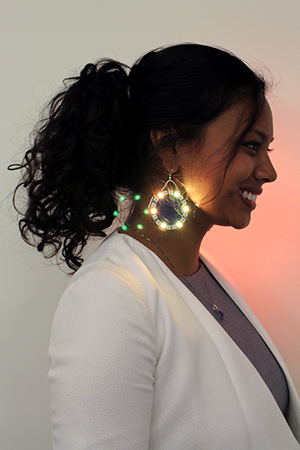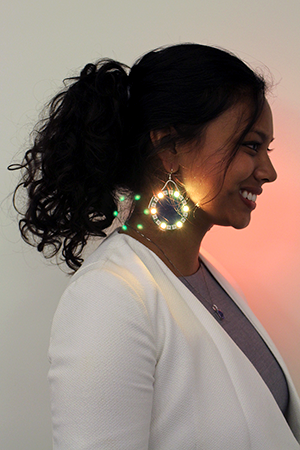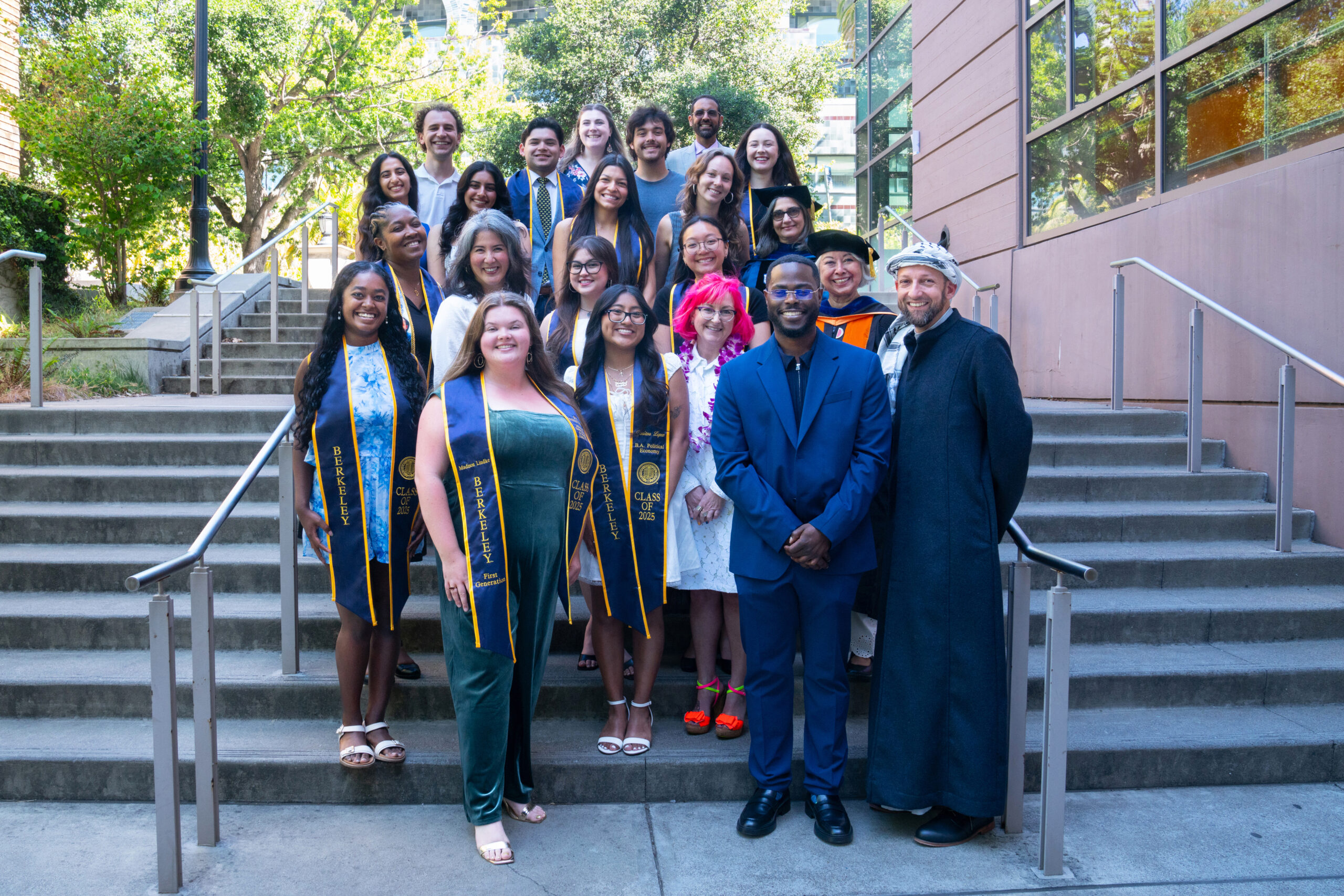By Carlo David

At age 22, Lavanya Jawaharlal is co-founder of a promising startup, a high-ranking officer within the UC Berkeley student government, and co-winner of a $200,000 award from the investment reality TV show “Shark Tank.”
Lavanya and her sister Melissa Jawaharlal, with whom she founded STEM Center USA in 2013, plan to use the award money for their nonprofit, which uses robotics and hands-on learning to teach Science, Technology, Engineering, and Math to diverse K-12 students.
Their win has produced high enthusiasm from the Berkeley community, but also a sense of relief for those, like Jawaharlal, who are eager to shatter the glass ceiling for American women in STEM. A 2014 University of California Hastings study found that 100 percent of women report gender bias in the STEM fields.
The Blum Center sat down with Jawaharlal to hear her views on the culture and politics of diversity in tech.
Did you ever imagine yourself appearing on national television to pitch your own business idea, let alone being the cofounder of startup that has so much potential for growth?
Not really. It all started in our living room, teaching robotics to the children of our family friends, who later brought their friends, whose friends brought more friends. We were basically doing what we were passionate about. But then our parents began to feel a little uncomfortable with the idea of having random kids in the living room. So we had to find a space, which eventually became STEM Center USA. Unlike other entrepreneurs, my sister and I never meant our project to grow into the organization it is today. But eventually we realized there is a need to do it.
What was your childhood like and how did it shape your passion for robotics?
My interest in robotics started when I was a kid. I was never really interested in playing with the toys my parents bought me. Instead, I was more interested in taking apart the toys’ gears. In addition to being an ethnic minority, I was someone you would describe as nerdy. I was known as Lavanya the Tomboy, someone whom everyone looked down upon. I did sports and I was into robotics. Coming to California from a small New Jersey suburb was comforting, because I realized I was not the only person of color with my interests. Once I got into high school, I became more interested in the mechanical aspects of engineering. My sister, Melissa, who is two years older than me, was also very passionate about hands-on learning. Together, we were able to combine our passions and introduce hands-on robotics learning to young students.
According to studies, women make up less than 25 percent of the STEM workforce. As a woman of color in STEM, how do you make sense of this gender gap?
It’s really frustrating. People tend to minimize the differences in opportunities available to men and women, but then you see the education and employment numbers and realize it’s not the case. The gender gap stems from societal issues. When girls are growing up, as soon as they enter elementary school, they are exposed to the notion that they should be good in arts, in drawing. In other words, they are taught to specialize in something that is socially agreed upon as gender appropriate. The same is true for the types of toys they play with; girls play with Barbies, while boys play with cars. At a young age, kids are taught to think and behave in a manner that is consistent with gender norms. This translates into gender-specific occupations. So while I find these statistics frustrating, I am not surprised by them.
Have there been instances, as a mechanical engineering student, as a young entrepreneur, where you felt intimidated or delegitimized?
I have never felt intimidated here at UC Berkeley, but there have been instances where I felt my voice was not heard. Because Mechanical Engineering is such a male-dominated space, I need to work twice as hard to make sure that my voice is heard. If I have an opinion on homework, I feel the need to get my opinion across. In labs, people unknowingly tend to ask questions more from my male colleagues, even if I have been in the lab for the same amount of time or longer. Also, I find that younger students tend to ask male students more questions. This bias stems from the fact that the struggles of women of color, especially those in STEM, are not discussed. When you work in spaces where the emphasis is more on technical aspects, the discourse becomes less about the gendered or racial nature of the environment.
What are some of the problems or deficiencies in the promotion of STEM to young students of color? What can we do better to ensure diversity in these fields?
One of the principles of STEM Center USA is the importance of hands-on learning. Today, in a lot of public school systems, the method of teaching and learning is very tedious: the teacher talks and the students listen and takes note. Essentially, this creates a system that is grounded more in memorization than the application of knowledge. We, at STEM Center USA, allow students to apply what they learn in math and science classes in hands-on opportunities like lab experiments. Also, we have seen significant budget cuts in math and sciences, which translates to gaps in learning. For students, the lack of resources and robust learning environments diminish their confidence and ability to take courses like algebra.
What advice would you give to young girls who aspire for a career in STEM?
If there’s an opportunity, take it. But the problem is the lack of opportunity for underrepresented students. So if you have the opportunity, take it and be proactive about it. One thing I teach our students is “You’re into robotics? Fantastic!” But it doesn’t mean that you have to be an engineer. It means you also consider being a teacher, an artist, an historian.
Where do you see yourself and your startup a year from now, five years from now? What do you wish to accomplish?
In the next year, we are aiming to open one or two more offices in Southern California. In five years, we are hoping to open 10 or 20 more offices around the country. And in 10 years, our goal is to operate internationally as well. A huge part of the job is replicating our model, while taking into account the logistics and legal side of setting up new creativity centers. If we are able to expand our operations in a lot of cities, we will allow many more STEM students to maximize their potential.
For further information on Stem Center USA, click here.




